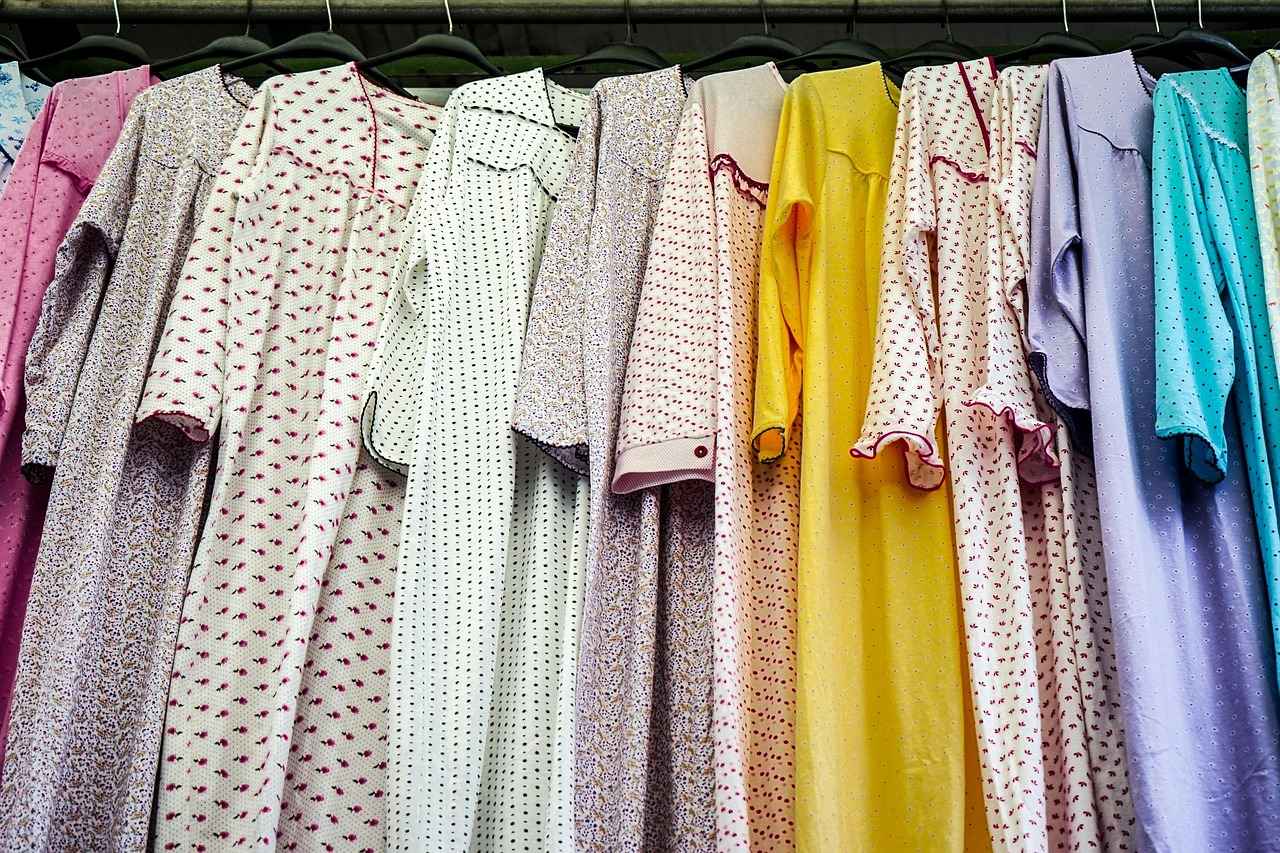This article delves into the distinctions between night dresses and pajamas, guiding you in selecting the ideal sleepwear for a restful night’s sleep. Uncover various styles, materials, and expert insights that enhance your sleep comfort.
What Are Night Dresses?
Night dresses are typically loose-fitting garments designed for sleep. Made from soft, breathable fabrics, they offer a comfortable and relaxed fit. Often reaching the ankle or knee, night dresses provide freedom of movement, making them a favored choice for many women, especially during warmer months.
What Are Pajamas?
Pajamas are versatile sleepwear sets that usually consist of a top and bottom. Available in various styles—from classic button-ups to modern sets—pajamas are designed for both comfort and warmth. They often feature elastic waistbands and soft materials, providing a snug fit that many find cozy during colder nights.
Which Is More Comfortable: Night Dresses or Pajamas?
Comfort is subjective, and the choice between night dresses and pajamas can vary greatly among individuals. Many find night dresses to be more breathable, particularly in warmer climates, while pajamas offer more warmth and coverage. Ultimately, your decision may depend on personal preference, body type, and the climate you live in.
How Do Fabrics Affect Sleep Quality?
The fabric of your sleepwear significantly impacts your overall sleep quality. Natural fibers like cotton and bamboo are known for their breathability and moisture-wicking properties, making them ideal for sleep. In contrast, synthetic materials may trap heat and moisture, potentially disrupting your sleep.
Are Night Dresses Better for Warm Weather?
Absolutely! Night dresses are often preferred in warm climates due to their lightweight design. They allow for better air circulation, helping to regulate body temperature during hot nights, which can lead to a more comfortable sleep experience.
Do Pajamas Offer More Warmth in Cold Weather?
Yes, pajamas typically provide more coverage and warmth, making them suitable for colder nights. Materials such as flannel and thermal fabrics are popular choices for winter sleepwear, ensuring you stay cozy as temperatures drop.
Which Style Is More Versatile?
Pajamas often come in a wider variety of styles, from casual to sophisticated, making them more versatile for both lounging and sleeping. Night dresses, while stylish, are generally less adaptable for daytime wear, limiting their use outside of nighttime.
How Do Personal Preferences Influence Sleepwear Choices?
Your individual preferences, including body type, personal style, and comfort needs, significantly influence your choice of sleepwear. Understanding your unique preferences can be key to selecting the best option for restful sleep.
What Are the Health Benefits of Comfortable Sleepwear?
Wearing comfortable sleepwear can enhance your sleep quality, reduce stress, and promote relaxation. Proper sleep attire contributes to better overall health and well-being, as it allows your body to rest and recover effectively during the night.
How to Care for Night Dresses and Pajamas?
Proper care extends the life of your sleepwear. Always follow the washing instructions on the label, use gentle detergents, and avoid high heat when drying to maintain the integrity of the fabric. This ensures your sleepwear remains comfortable and durable over time.
What Are the Trends in Sleepwear Fashion?
Sleepwear fashion is evolving, with a growing focus on sustainability, comfort, and style. Eco-friendly materials and chic designs are becoming increasingly popular among consumers, reflecting a shift towards more conscious purchasing decisions.
How to Choose the Right Sleepwear for You?
Choosing the right sleepwear involves considering factors such as fabric, fit, and personal style. Evaluate your needs and preferences to find the perfect sleepwear that aligns with your lifestyle and ensures a restful night.
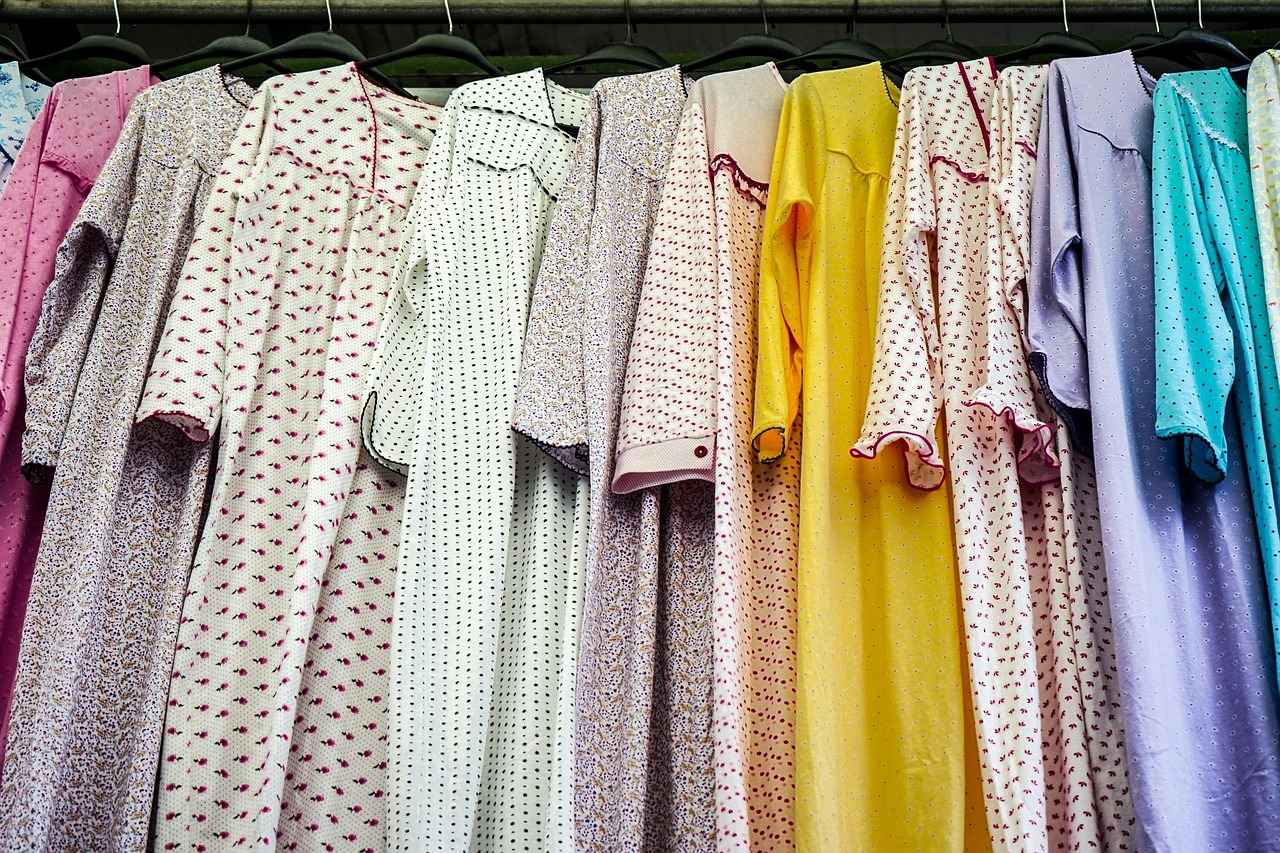
What Are Night Dresses?
Night dresses are loose-fitting garments specifically designed for sleep, often crafted from soft, breathable fabrics. These garments have gained popularity among women for their ability to provide both comfort and style. Unlike traditional pajamas, night dresses offer a more relaxed fit, allowing for unrestricted movement during sleep. This is particularly beneficial for those who prefer a more natural feel against their skin while resting.
Typically made from materials such as cotton, satin, or bamboo, night dresses are designed to cater to various preferences and climates. Cotton night dresses are especially favored for their breathability and moisture-wicking properties, making them ideal for warmer nights. On the other hand, satin options provide a luxurious feel, perfect for those who enjoy a touch of elegance in their sleepwear.
One of the key advantages of night dresses is their versatility. They can be worn not only for sleeping but also for lounging around the house. Many women find them suitable for relaxing evenings or even as stylish alternatives to casual dresses during the day. This multifunctionality makes night dresses an appealing choice for those who value both comfort and style.
When considering the design of night dresses, options range from simple, classic styles to more intricate designs featuring lace, embroidery, or patterns. This variety allows individuals to express their personal style while prioritizing comfort. Additionally, many night dresses come with adjustable straps or elastic waistbands, enhancing their fit and comfort level.
Another factor to consider is how night dresses impact sleep quality. The choice of fabric plays a crucial role in ensuring a good night’s sleep. Natural fibers like cotton and bamboo are known for their breathability, allowing for better air circulation and temperature regulation. This is particularly important for individuals who tend to overheat during the night.
In contrast, synthetic materials can sometimes trap heat and moisture, potentially disrupting sleep. Therefore, opting for night dresses made from natural fabrics can significantly enhance sleep quality by providing a more comfortable sleeping environment.
Furthermore, night dresses are often designed with minimal seams and tags, reducing the likelihood of irritation during sleep. This thoughtful design feature contributes to a more restful night, allowing for uninterrupted sleep cycles.
For those living in warmer climates, night dresses are often the preferred choice due to their lightweight design and ability to promote airflow. They allow for better air circulation around the body, which can help regulate body temperature during hot nights. This makes them a staple in many women’s wardrobes, especially during the summer months.
Ultimately, the choice between night dresses and other sleepwear options, such as pajamas, comes down to personal preference. While some may favor the warmth and coverage of pajamas, others may find the freedom and comfort of night dresses more appealing. Understanding your own comfort needs and preferences is key to selecting the right sleepwear for a restful night.
In conclusion, night dresses are a fantastic option for those seeking comfort, style, and versatility in their sleepwear. With various designs and fabrics available, they cater to a wide range of preferences and climates, making them suitable for any woman looking for a good night’s sleep.
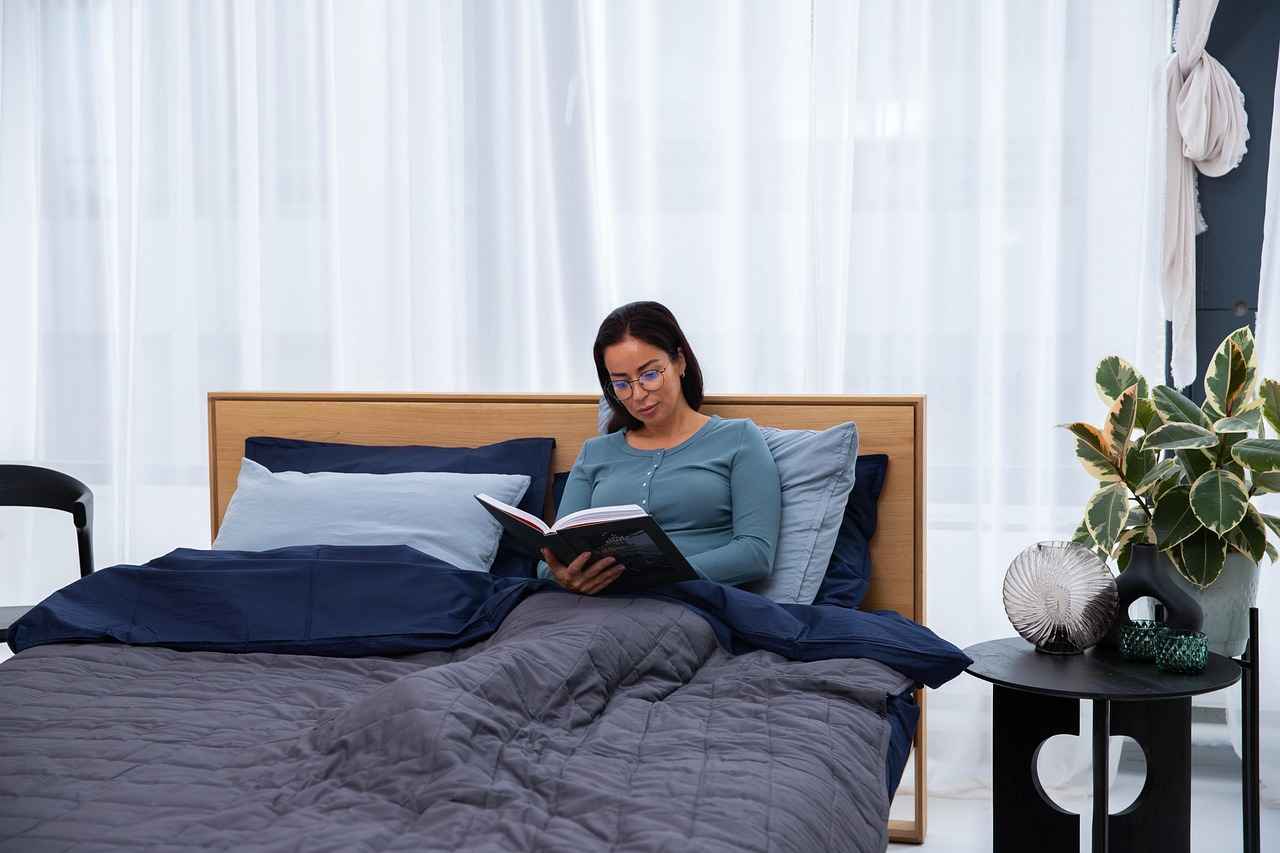
What Are Pajamas?
Pajamas are a staple of sleepwear, cherished for their blend of comfort and style. Traditionally, pajamas consist of a matching top and bottom set, designed to provide warmth and ease during sleep. They come in a myriad of styles, colors, and fabrics, catering to diverse preferences and climates.
- Classic Pajama Sets: Typically made from cotton or silk, these sets include a button-up top and matching pants, offering a timeless look.
- Pajama Shorts: Ideal for warmer weather, these sets feature a short-sleeved top paired with shorts, allowing for better airflow.
- Onesies: Popular among adults and children alike, onesies are one-piece garments that provide full coverage and warmth.
- Sleep Shirts: These loose-fitting shirts can be worn alone or with bottoms, offering flexibility and comfort.
The fabric choice is crucial in determining the overall comfort of pajamas. Common materials include:
| Material | Benefits |
|---|---|
| Cotton | Soft, breathable, and moisture-wicking, making it perfect for year-round wear. |
| Flannel | Ideal for cold weather, flannel is warm and cozy, providing extra insulation. |
| Satin | Luxurious and smooth, satin pajamas offer a touch of elegance and are often used for special occasions. |
| Bamboo | Eco-friendly and hypoallergenic, bamboo fabric is breathable and moisture-wicking. |
Pajamas are designed with comfort in mind. Many feature elastic waistbands, which allow for a snug fit without being restrictive. This flexibility is particularly beneficial for those who move around during sleep. Moreover, the variety of styles means that there is a perfect pair for everyone, whether you prefer a fitted look or a more relaxed style.
Wearing the right pajamas can significantly impact sleep quality. Pajamas made from breathable fabrics help regulate body temperature, while those designed for warmth can keep you cozy during chilly nights. Experts suggest that comfortable sleepwear can reduce sleep disturbances, allowing for deeper and more restorative sleep.
While night dresses are often favored for their breathability, pajamas provide more coverage and warmth, making them a better choice for colder climates. Additionally, pajamas can be styled for lounging, making them versatile for both sleep and relaxation.
To maintain the quality of your pajamas, it’s essential to follow proper care guidelines. Always check the care label for specific washing instructions. In general, washing pajamas in cold water with a gentle detergent and avoiding high heat during drying will help preserve their fabric integrity.
As the focus on comfort and sustainability grows, pajama fashion is evolving. Many brands are now offering eco-friendly options made from organic materials, and styles are becoming more diverse, catering to both traditional and contemporary tastes. From playful prints to minimalist designs, there’s something for everyone.
In conclusion, pajamas are more than just sleepwear; they are an essential part of your nighttime routine that can enhance your overall sleep quality. Whether you prefer the classic look of a pajama set or the modern twist of a sleep shirt, the right choice will depend on your personal preferences and needs.
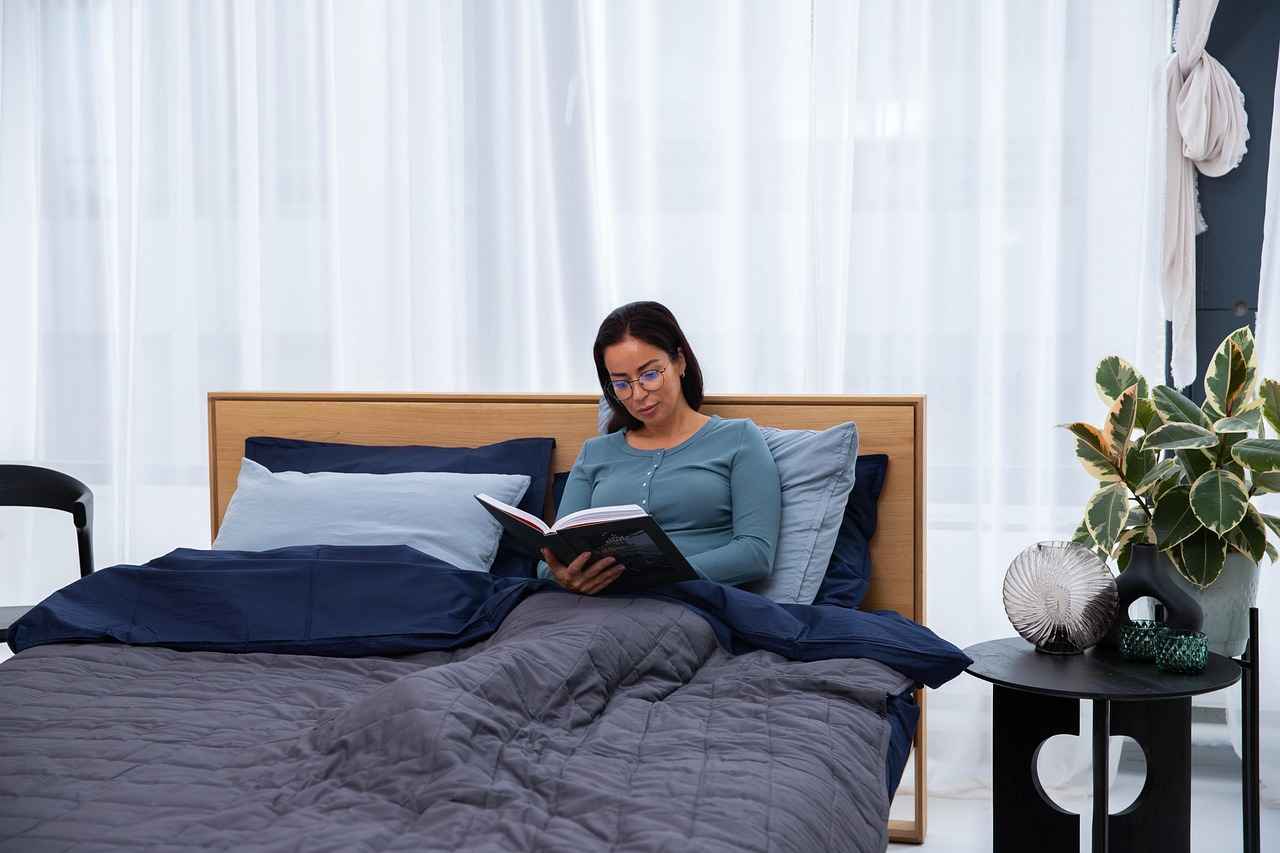
Which Is More Comfortable: Night Dresses or Pajamas?
When it comes to achieving a restful night’s sleep, the debate between night dresses and pajamas often arises. Both options have their unique advantages, but which one is truly more comfortable? This article delves into the nuances of each, helping you make an informed decision based on your personal preferences and sleeping environment.
Comfort is inherently subjective; what feels cozy to one person may not suit another. However, many people find that night dresses tend to be more breathable. Made from lightweight materials, they facilitate air circulation, which can be particularly beneficial during warm nights. The loose fit of night dresses allows for greater freedom of movement, making them an appealing choice for those who prefer a relaxed sleeping experience.
On the other hand, pajamas are designed with warmth and coziness in mind. Typically consisting of a matching top and bottom, pajamas often feature elastic waistbands and soft fabrics like flannel or jersey. This design provides a snug fit that many find comforting, especially during colder months. The added coverage of pajamas can create a sense of security and warmth that night dresses may not offer.
Your choice between night dresses and pajamas may largely depend on the climate you live in. In warmer regions, night dresses are often favored for their lightweight and breathable qualities, allowing the body to stay cool throughout the night. Conversely, in colder climates, pajamas are generally preferred due to their ability to retain heat and provide a cozy layer against chilly air.
The fabric of your sleepwear plays a crucial role in determining overall comfort. Natural fibers such as cotton and bamboo are known for their breathability, making them excellent choices for night dresses. These materials wick moisture away from the body, helping to regulate temperature. In contrast, synthetic fabrics can trap heat and moisture, leading to discomfort during sleep.
Ultimately, personal preferences significantly influence sleepwear choices. Factors such as body type, personal style, and individual comfort needs should be considered. For example, those who prefer a more fitted style might lean towards pajamas, while those who enjoy a looser fit may opt for night dresses. Understanding your own comfort requirements is key to selecting the best option for a good night’s sleep.
Wearing comfortable sleepwear can enhance sleep quality, reduce stress levels, and promote relaxation. Studies have shown that the right sleep attire contributes to better overall health and well-being. Whether you choose a night dress or pajamas, prioritizing comfort can lead to improved sleep patterns and a more restful night.
To maximize the lifespan of your night dresses and pajamas, proper care is essential. Always follow the washing instructions provided on the label. Use gentle detergents and avoid high heat when drying to maintain the integrity of the fabric. This not only preserves the quality of your sleepwear but also ensures that they remain comfortable for years to come.
As sleepwear fashion evolves, trends increasingly focus on sustainability and comfort. Many consumers are now seeking eco-friendly materials that are both stylish and functional. Whether it’s the latest designs in pajamas or chic night dresses, staying informed about current trends can help you make a fashionable yet comfortable choice.
In conclusion, whether you prefer night dresses or pajamas, understanding the factors that contribute to comfort can help you make an informed choice. By considering climate, fabric, and personal preferences, you can find the perfect sleepwear that enhances your overall sleep experience.
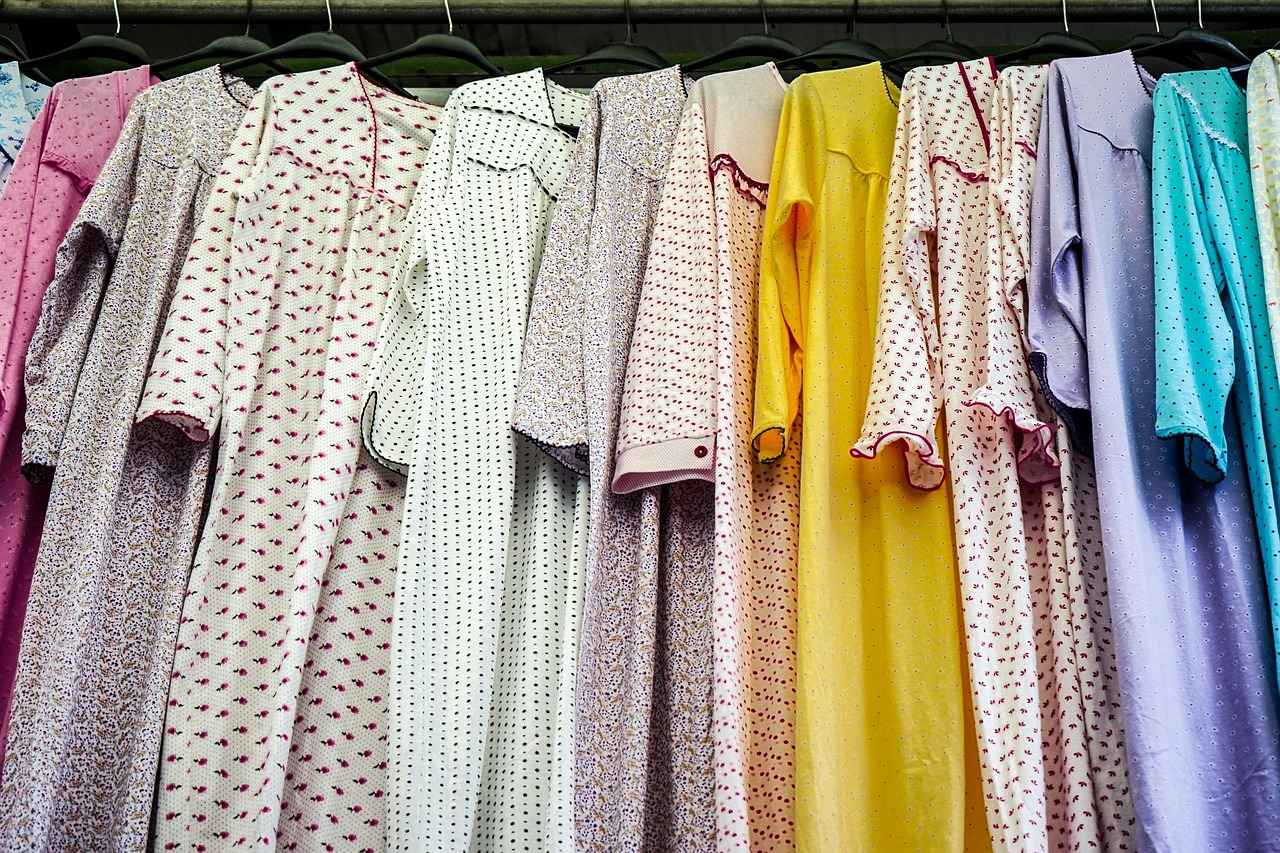
How Do Fabrics Affect Sleep Quality?
When it comes to achieving a restful night’s sleep, the fabric of your sleepwear plays a crucial role. The choice of material can significantly impact your comfort and overall sleep quality. This article delves into how different fabrics affect sleep, helping you make informed choices for your bedtime attire.
Natural fibers, such as cotton and bamboo, are often recommended for sleepwear due to their breathability. These materials allow air to circulate, helping to regulate your body temperature throughout the night. Cotton, for instance, is known for its softness and ability to wick moisture away from the skin. This is particularly beneficial for individuals who tend to sweat during sleep, as it helps keep the body dry and comfortable.
Bamboo fabric is another excellent choice for sleepwear. Not only is it incredibly soft, but it also has natural moisture-wicking properties. This means it can absorb moisture without feeling damp, keeping you cool during warm nights. Additionally, bamboo is hypoallergenic and has antibacterial properties, making it suitable for those with sensitive skin or allergies.
On the other hand, synthetic materials like polyester and nylon can trap heat and moisture against the skin. While these fabrics are often more affordable and durable, they may not be the best choice for sleepwear. The lack of breathability can lead to discomfort, especially in warmer climates or during hot flashes. If you prefer synthetic options, look for those that incorporate moisture-wicking technology to enhance comfort.
The weight of the fabric also plays a significant role in sleep quality. Lightweight fabrics are generally more suitable for warmer conditions, allowing for better airflow. Conversely, heavier fabrics like flannel are ideal for colder weather, providing warmth and insulation. Understanding the climate you sleep in can help you choose the right fabric weight for optimal comfort.
For those who experience fluctuating temperatures at night, layering sleepwear can be an effective strategy. Consider wearing a lightweight cotton top with a warmer bottom, or vice versa. This allows you to adjust your clothing as needed throughout the night, ensuring you remain comfortable regardless of temperature changes.
Ultimately, personal preference plays a significant role in how fabrics affect sleep quality. Some individuals may prefer the feel of natural fibers, while others might prioritize the durability of synthetic materials. Experimenting with different fabrics can help you discover what works best for your unique sleep needs.
Investing in high-quality sleepwear made from the right fabrics can lead to improved sleep quality. Look for brands that prioritize comfort and use breathable materials. Reading reviews and seeking recommendations can also guide you toward making the best choice for your sleepwear collection.
In conclusion, the fabric of your sleepwear is an essential factor in determining your sleep quality. By understanding the benefits and drawbacks of various materials, you can make informed decisions that enhance your comfort and promote a restful night’s sleep. Whether you opt for the breathability of natural fibers or the practicality of synthetic options, choosing the right fabric is key to achieving the sleep you deserve.
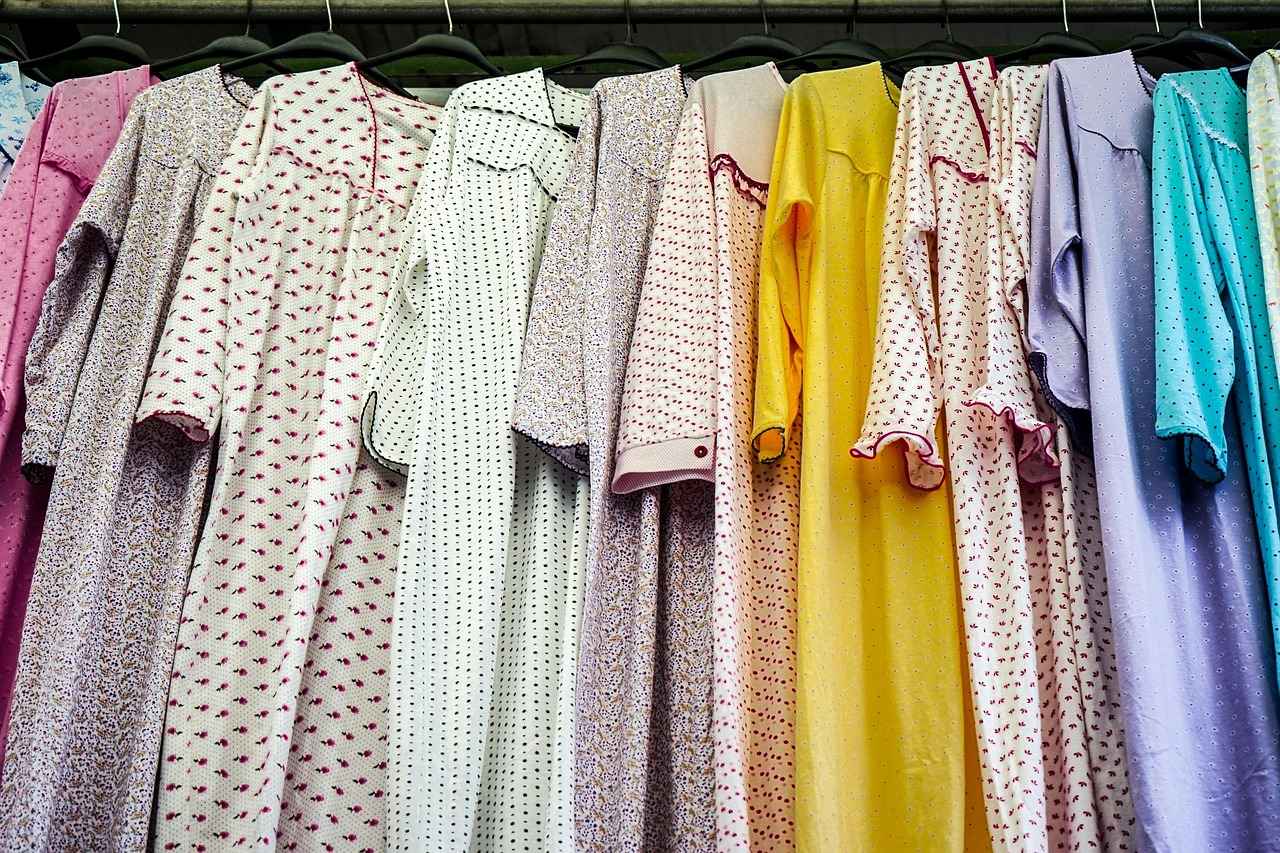
Are Night Dresses Better for Warm Weather?
When it comes to selecting sleepwear, the climate plays a crucial role in determining the best choice for a comfortable night’s rest. In warmer weather, many individuals gravitate towards night dresses for their unique benefits. This article delves into the reasons why night dresses are often considered superior for hot nights, exploring their design, materials, and overall comfort.
Night dresses are typically made from lightweight fabrics such as cotton, linen, or modal, which are known for their breathability. These materials allow for better air circulation, significantly enhancing comfort during warm nights. Unlike heavier sleepwear, night dresses do not cling to the body, enabling cool airflow that helps regulate body temperature.
One of the standout features of night dresses is their loose-fitting design. This design allows for natural movement and prevents heat buildup. When the body generates heat during sleep, a night dress helps dissipate this warmth, ensuring that you remain cool and comfortable throughout the night. In contrast, traditional pajamas, particularly those made from synthetic materials, can trap heat and moisture, leading to discomfort.
Choosing the right fabric is essential for sleep quality. Night dresses made from natural fibers such as cotton and bamboo are excellent choices for warm weather. These materials are not only breathable but also wick moisture away from the body, reducing the likelihood of waking up feeling sweaty. On the other hand, synthetic fabrics can lead to overheating, making night dresses a more favorable option for those living in hot climates.
Night dresses come in a variety of styles, from simple and elegant to more playful designs. This versatility allows them to be worn not only for sleeping but also for lounging around the house. Many women appreciate the aesthetic appeal of night dresses, which can be both comfortable and stylish. In contrast, pajamas, while functional, may not offer the same level of style versatility, often being seen as more casual or less fashionable.
Beyond comfort, wearing night dresses can provide several health benefits. The breathable nature of the fabrics can help prevent skin irritations and rashes that may occur from trapped heat. Additionally, a comfortable night’s sleep is linked to improved mental health, as it can reduce stress and promote relaxation. Night dresses, by enhancing sleep quality, can contribute positively to your overall well-being.
While many find night dresses to be the best option for warm weather, personal preference plays a significant role in sleepwear choices. Some individuals may prefer the snug fit of pajamas, especially in cooler climates. However, for those living in consistently warm areas, the benefits of night dresses—such as breathability and comfort—often outweigh the advantages of traditional pajamas.
In summary, night dresses are an excellent choice for warm weather due to their lightweight design, breathable fabrics, and stylish versatility. By allowing for better air circulation and temperature regulation, they enhance sleep quality and overall comfort. Whether you are lounging at home or drifting off to sleep, a night dress can provide the perfect blend of style and functionality for those hot summer nights.
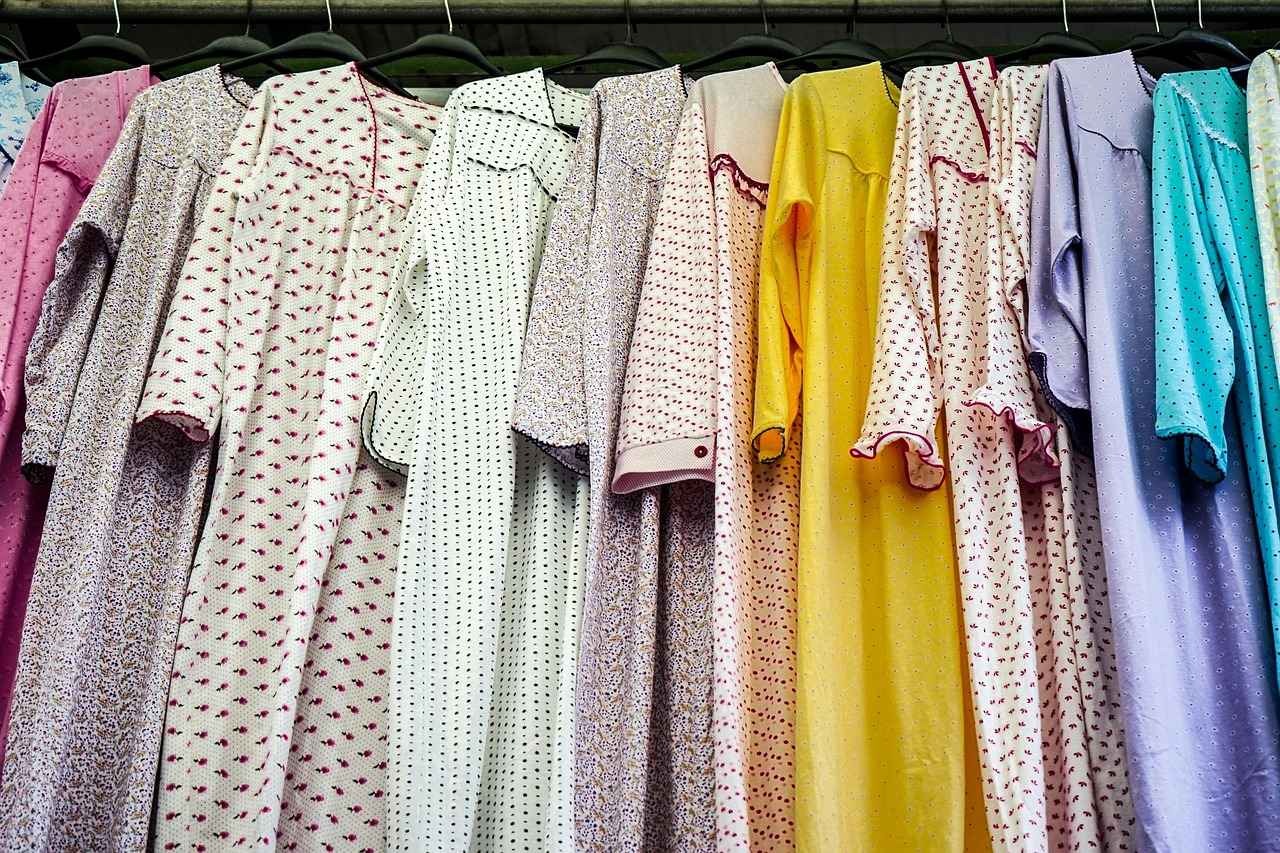
Do Pajamas Offer More Warmth in Cold Weather?
When it comes to choosing sleepwear for colder nights, the question often arises: The answer is a resounding yes. Pajamas are specifically designed to provide additional coverage and insulation, making them an excellent choice for chilly evenings. In this article, we will explore the various materials, styles, and benefits of wearing pajamas during the winter months, ensuring you stay warm and comfortable throughout the night.
Pajamas typically consist of a top and bottom set, which allows for greater coverage compared to other sleepwear options, such as night dresses. This design helps to trap body heat, keeping you warmer as you sleep. The layered structure of pajamas acts as a barrier against cold air, making them an effective choice for winter nights.
When selecting pajamas for colder weather, the material plays a crucial role in warmth and comfort. Here are some popular choices:
- Flannel: Known for its soft texture and insulating properties, flannel is a favorite for winter pajamas. It retains heat while remaining breathable, making it ideal for those who want to stay cozy without overheating.
- Thermal Fabrics: Thermal pajamas are designed with a unique weave that traps heat, providing excellent insulation. These materials are lightweight yet effective, making them a popular choice for colder climates.
- Fleece: Soft and plush, fleece pajamas offer warmth and comfort. They are perfect for lounging around the house on cold evenings, as they provide a snug fit without sacrificing mobility.
When selecting pajamas for winter, consider the following factors:
- Fit: Opt for a slightly looser fit to allow for layering and movement while sleeping.
- Length: Full-length pajamas are ideal for colder nights, as they cover more of your body and provide additional warmth.
- Layering Options: Consider pajamas that can be layered with thermal tops or bottoms for extra insulation during particularly cold nights.
Wearing pajamas during the winter months offers several benefits:
- Improved Sleep Quality: Staying warm can lead to better sleep quality, as your body is less likely to wake up due to feeling cold.
- Comfort: Pajamas made from soft, warm materials enhance overall comfort, allowing for a more restful night.
- Health Benefits: Keeping warm during sleep can help regulate body temperature, which is essential for good health and well-being.
Yes, pajamas can assist in temperature regulation. High-quality fabrics like cotton, flannel, and thermal materials wick moisture away from the body while providing warmth. This balance helps maintain a comfortable temperature throughout the night, reducing the likelihood of waking up due to overheating or chills.
In summary, pajamas are a superior choice for cold weather due to their coverage, warmth, and variety of materials. By selecting the right pair of pajamas—whether they be flannel, thermal, or fleece—you can ensure a cozy and restful night’s sleep, even in the coldest of temperatures. So, when the temperature drops, reach for your favorite pajamas and enjoy the warmth they provide!
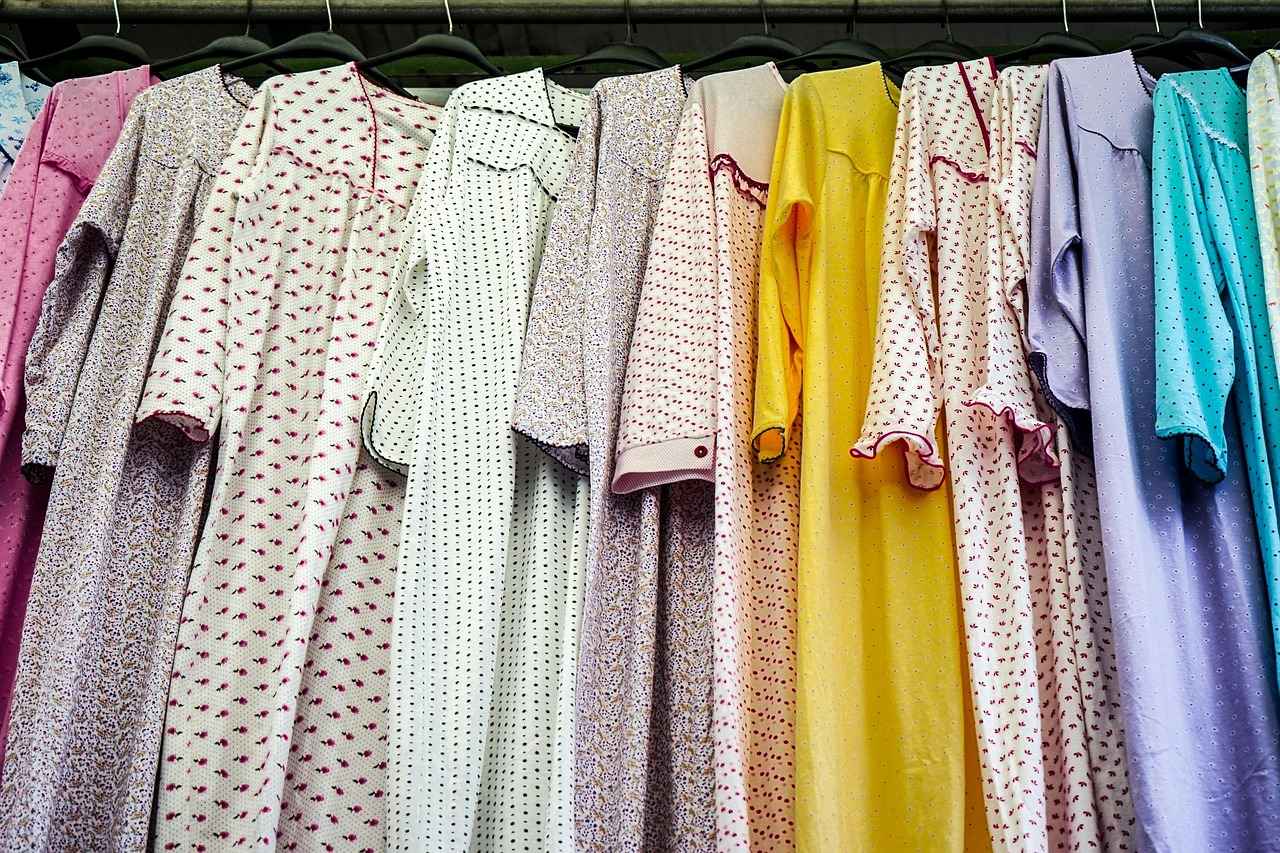
Which Style Is More Versatile?
When it comes to sleepwear, the choice between pajamas and night dresses often hinges on their versatility. Both options provide comfort for sleeping, but they cater to different preferences and occasions.
Pajamas are incredibly versatile due to their wide range of styles and designs. They typically consist of a matching top and bottom set, which can vary from casual to elegant. This adaptability allows them to be worn not just for sleep, but also for lounging around the house. Whether you prefer a classic cotton set or a luxurious silk ensemble, pajamas can meet your needs. They can also be layered with other clothing, such as a cozy robe, making them suitable for various settings.
Night dresses, while comfortable and stylish, are generally less versatile than pajamas. They are designed primarily for sleep and are often made from lightweight materials that promote breathability. Although they can be worn for lounging, their style is typically more feminine and less adaptable for daytime wear. However, some night dresses can be dressed up with accessories for casual outings, but this is not their primary function.
- Work-from-home days: A nice pair of pajamas can keep you comfortable during video calls while still looking presentable.
- Sleepovers: Pajamas are perfect for sleepovers, offering comfort and style.
- Lounging: They can be easily worn while enjoying a movie night at home.
While night dresses are primarily intended for sleep, they can sometimes be styled for daytime use. Pairing a night dress with a denim jacket or adding a belt can create a chic, relaxed look. However, this requires careful selection of accessories to ensure the outfit is appropriate for daytime activities. In contrast, pajamas typically do not lend themselves to such transformations.
Your decision may depend on several factors:
- Comfort: Some may find pajamas to be more comfortable due to their snug fit and variety of fabrics.
- Style: Personal style plays a significant role; those who prefer a relaxed look may lean towards pajamas, while others may favor the elegance of night dresses.
- Climate: In warmer climates, night dresses may be more appealing due to their lightweight nature, while colder climates might require the extra warmth that pajamas provide.
When choosing between pajamas and night dresses, consider your lifestyle and sleep environment. If you value versatility and plan to wear your sleepwear for more than just sleeping, pajamas are likely the better option. Conversely, if you prioritize comfort and prefer a more fluid garment, a night dress may suit you better.
Ultimately, both pajamas and night dresses have their unique advantages. Understanding your personal preferences and needs will help you make the best choice for a restful night’s sleep.
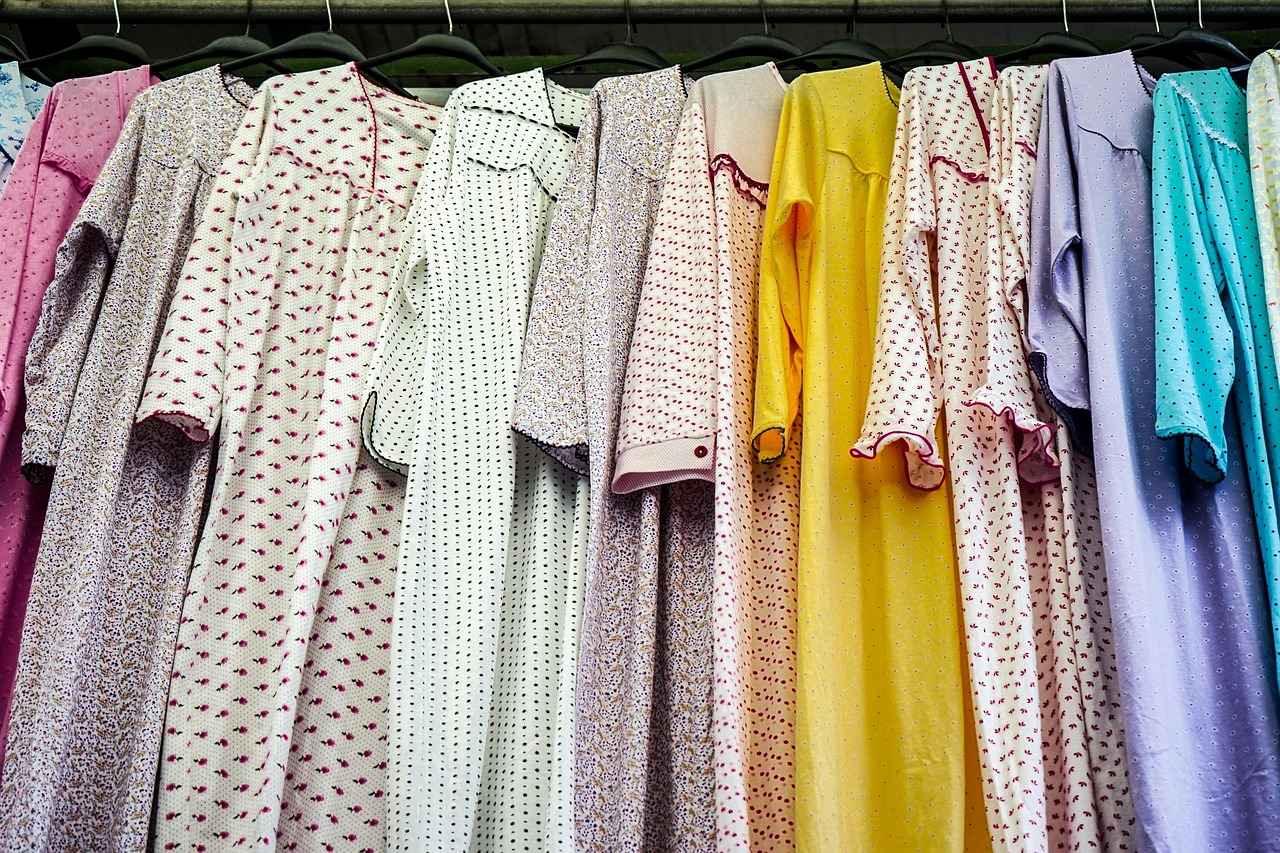
How Do Personal Preferences Influence Sleepwear Choices?
When it comes to choosing sleepwear, individual preferences play a crucial role. Factors such as body type, personal style, and comfort needs can significantly influence your decision. Understanding these preferences is essential for selecting the most suitable option for a restful night’s sleep. This article delves into how these elements shape sleepwear choices, ensuring you find the perfect fit for your needs.
Your body type can greatly affect your sleepwear choice. For instance, individuals with a curvier figure may prefer night dresses that provide a looser fit, offering more freedom of movement. In contrast, those with a slimmer build might opt for form-fitting pajamas that accentuate their shape. Recognizing your body type can help you choose sleepwear that enhances your comfort and boosts your confidence.
Personal style is another significant factor in selecting sleepwear. Some individuals may lean towards classic designs, while others might prefer more trendy or playful options. Night dresses often come in various styles, from elegant lace to simple cotton, allowing for expression of personal taste. Pajamas, on the other hand, can range from sophisticated silk sets to cozy flannel ensembles, catering to diverse preferences.
Everyone has different comfort needs when it comes to sleep. Some may require lightweight fabrics that allow for breathability, especially in warmer climates, while others may seek thicker materials for warmth during cold nights. Fabrics such as cotton, modal, and bamboo are popular choices for their softness and moisture-wicking properties. Understanding what feels comfortable against your skin can lead to better sleep quality.
Your local climate can also dictate your sleepwear choices. In warm weather, breathable night dresses may be preferred for their ability to keep you cool. Conversely, in cold climates, pajamas made from flannel or thermal materials can provide the necessary warmth. Adapting your sleepwear to your environment is essential for maintaining a comfortable sleep experience.
Your age and lifestyle can further influence your sleepwear selections. Younger individuals may gravitate towards more vibrant and fashionable sleepwear, while older adults might prioritize comfort and ease of wear. Additionally, those with active lifestyles may prefer sleepwear that allows for greater movement, such as loose-fitting pajamas or night dresses.
- Experimentation: Try different styles and fabrics to see what feels best.
- Listen to Your Body: Pay attention to how your body reacts to various materials and fits.
- Consider Your Routine: Think about how your sleepwear fits into your overall lifestyle and daily routine.
In conclusion, understanding your individual preferences in terms of body type, personal style, and comfort needs is vital when selecting sleepwear. By taking these factors into account, you can choose the best option that not only enhances your sleep experience but also reflects your unique personality. The right sleepwear can lead to improved sleep quality, making it an essential aspect of your nightly routine.
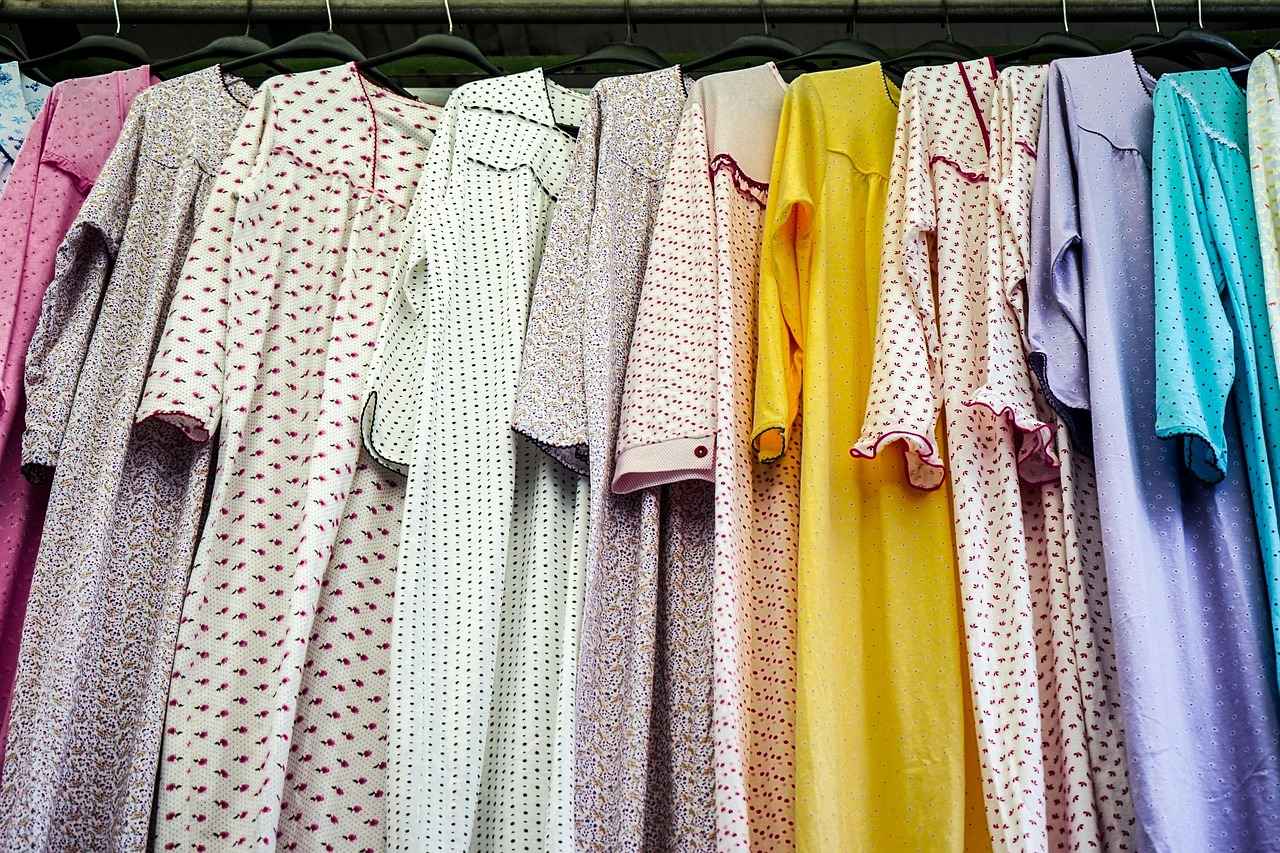
What Are the Health Benefits of Comfortable Sleepwear?
When it comes to achieving a restful night’s sleep, the importance of wearing comfortable sleepwear cannot be overstated. The right attire can significantly enhance sleep quality, reduce stress levels, and promote overall relaxation. Understanding the health benefits of comfortable sleepwear is crucial for anyone looking to improve their nightly rest.
Comfortable sleepwear directly influences your ability to fall and stay asleep. Fabrics that are soft and breathable, such as cotton or bamboo, allow for better air circulation, which can help regulate body temperature throughout the night. In contrast, sleepwear made from synthetic materials may trap heat, leading to discomfort and disturbed sleep patterns.
Wearing the right sleepwear can create a sense of calm and relaxation, which is essential for reducing stress. When you slip into comfortable garments, your body signals that it’s time to unwind. This psychological effect can lower cortisol levels, the hormone associated with stress, making it easier to drift off to sleep.
The fit of your sleepwear is equally important. Loose-fitting garments can help prevent restriction of movement during sleep, allowing for a more natural and comfortable sleeping position. Tight or constrictive clothing can lead to discomfort, which may disrupt your sleep cycle.
Choosing the right fabric is essential for maximizing the benefits of your sleepwear. Natural fibers such as cotton, linen, and bamboo are excellent choices as they are breathable and moisture-wicking. These fabrics help keep your body cool and dry, which is particularly beneficial for those who tend to sweat at night.
Quality sleep is a cornerstone of good health. By investing in comfortable sleepwear, you are not only enhancing your sleep quality but also contributing to your overall well-being. Studies have shown that poor sleep can lead to various health issues, including obesity, heart disease, and weakened immune function. Thus, prioritizing comfort in your sleepwear can have long-lasting health benefits.
Temperature regulation is crucial for a good night’s sleep. Comfortable sleepwear made from breathable materials can help dissipate heat, preventing overheating during the night. This is particularly important for individuals who experience night sweats or live in warmer climates. By wearing sleepwear that allows for proper airflow, you can maintain an optimal sleeping temperature.
There’s a psychological aspect to wearing comfortable sleepwear as well. When you dress in cozy, soft fabrics, it can create a bedtime ritual that signals to your brain that it’s time to relax. This routine can help improve your sleep hygiene, making it easier to fall asleep and wake up feeling refreshed.
- Prioritize Comfort: Look for materials that feel good against your skin.
- Consider Fit: Opt for loose-fitting options to allow for freedom of movement.
- Check the Fabric: Choose breathable, natural fibers over synthetic materials.
- Think About Climate: Select sleepwear appropriate for the season to aid in temperature regulation.
In conclusion, the health benefits of wearing comfortable sleepwear are manifold. From promoting better sleep quality to reducing stress and improving overall well-being, the right sleep attire can make a significant difference in your nightly rest. By being mindful of the materials, fit, and styles you choose, you can enhance your sleep experience and contribute to a healthier lifestyle.
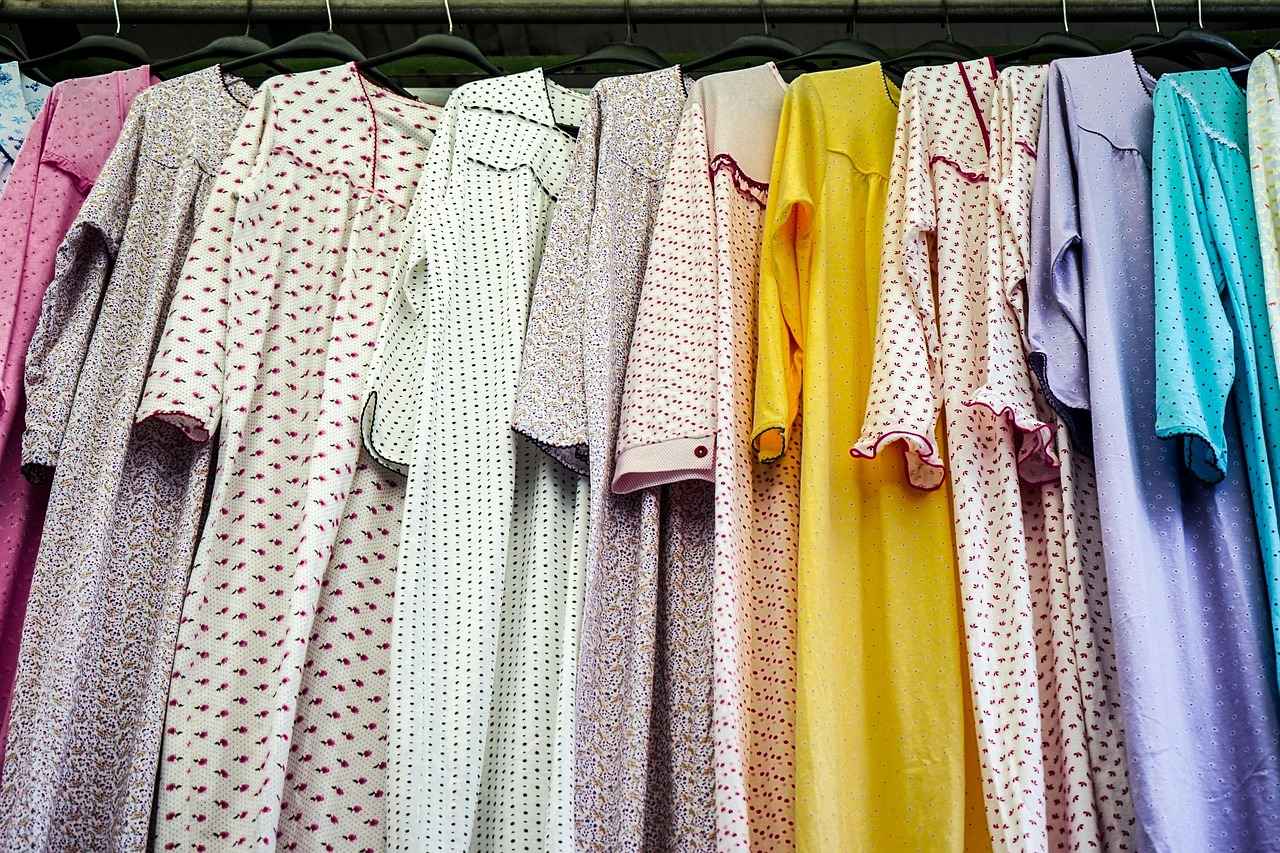
How to Care for Night Dresses and Pajamas?
When it comes to enhancing the longevity of your beloved night dresses and pajamas, proper care is essential. By following a few simple guidelines, you can ensure that your sleepwear remains in excellent condition for years to come. Below, we delve into effective care practices that will help maintain the integrity of your fabrics while keeping them comfortable and stylish.
Taking care of your sleepwear not only extends its life but also enhances your overall sleeping experience. Fabrics can degrade over time due to improper washing and drying techniques, leading to a loss of softness and fit. Here are some key reasons why proper care matters:
- Fabric Integrity: Gentle washing and drying maintain the structure of the fabric.
- Comfort: Well-maintained sleepwear retains its softness, ensuring a comfortable night’s sleep.
- Appearance: Proper care prevents fading and wear, keeping your sleepwear looking fresh and stylish.
To keep your night dresses and pajamas in top shape, always follow the washing instructions provided on the care label. Here are some general tips:
- Use Cold Water: Washing in cold water helps to prevent shrinking and color fading.
- Choose Gentle Detergents: Opt for mild, non-toxic detergents that are free from harsh chemicals.
- Avoid Fabric Softeners: While they may seem beneficial, fabric softeners can coat fibers and reduce breathability.
Drying your sleepwear correctly is just as crucial as washing. Here are some recommended practices:
- Air Dry When Possible: Hanging your sleepwear to dry can prevent damage caused by high heat.
- Use Low Heat Settings: If using a dryer, select a low heat setting to avoid fabric shrinkage and degradation.
- Remove Promptly: Take your sleepwear out of the dryer as soon as it’s done to reduce wrinkles.
Storage also plays a role in the longevity of your sleepwear. Here are some tips for proper storage:
- Keep It Dry: Store sleepwear in a cool, dry place to prevent mold and mildew.
- Avoid Overcrowding: Ensure that your sleepwear has enough space to avoid wrinkles and creases.
- Use Drawers or Bins: Organizing your sleepwear in drawers or bins can help maintain its shape.
To ensure the best care for your night dresses and pajamas, avoid the following:
- Hot Water: Washing in hot water can cause shrinkage and damage to delicate fabrics.
- Bleach: This harsh chemical can weaken fibers and lead to discoloration.
- Ironing: Most sleepwear fabrics do not require ironing; if needed, use a low setting.
By adhering to these care guidelines, you can ensure that your night dresses and pajamas remain comfortable, stylish, and durable. Remember, investing time in proper care pays off in the long run, allowing you to enjoy your sleepwear for many restful nights to come.

What Are the Trends in Sleepwear Fashion?
In recent years, the realm of sleepwear fashion has undergone a remarkable transformation, reflecting a growing emphasis on sustainability, comfort, and style. As consumers become more conscious of their purchasing decisions, the demand for eco-friendly materials and chic designs has surged. This article delves into the latest trends in sleepwear fashion, highlighting key elements that are shaping the industry.
Modern consumers are increasingly prioritizing sustainable sleepwear options. Brands are now seeking to minimize their environmental footprint by utilizing organic cotton, bamboo, and recycled fabrics. These materials not only reduce waste but also offer superior comfort and breathability. The trend towards sustainability is not just a passing phase; it represents a fundamental shift in consumer values, where eco-conscious choices are becoming the norm.
Gone are the days when sleepwear was merely functional. Today’s sleepwear combines style with comfort, allowing individuals to feel good while they sleep. Designers are crafting pieces that feature elegant silhouettes, intricate lace details, and vibrant colors, ensuring that sleepwear is as fashionable as it is comfortable. The rise of loungewear has also blurred the lines between sleepwear and everyday attire, enabling wearers to transition seamlessly from bed to brunch.
Advancements in fabric technology have led to the creation of innovative materials that enhance sleep quality. Fabrics infused with moisture-wicking properties help regulate body temperature, making them ideal for restless sleepers. Additionally, sleepwear made from breathable fabrics like Tencel and modal is gaining traction, as they provide a soft touch against the skin while promoting airflow.
The shift towards inclusivity is another significant trend in sleepwear fashion. Brands are expanding their size ranges to cater to a diverse audience, ensuring that everyone can find comfortable and stylish sleepwear. This inclusivity not only fosters a sense of belonging but also encourages self-expression through fashion, allowing individuals to choose pieces that resonate with their personal style.
Consumers are increasingly seeking personalized options in their sleepwear. Customizable designs, monogramming, and unique patterns enable individuals to express their personality and preferences. This trend towards personalization is empowering consumers to curate their sleepwear collections, making them feel more connected to their choices.
Technology is also making its mark on sleepwear fashion. Smart sleepwear equipped with sensors can monitor sleep patterns and provide insights for better sleep hygiene. This integration of technology not only enhances the functionality of sleepwear but also aligns with the growing trend of health and wellness among consumers.
The evolution of sleepwear fashion is a reflection of changing consumer values and lifestyles. With sustainability, comfort, style, and technology at the forefront, the future of sleepwear looks promising. As brands continue to innovate and adapt to consumer needs, sleepwear will undoubtedly remain a vital aspect of personal style and well-being.
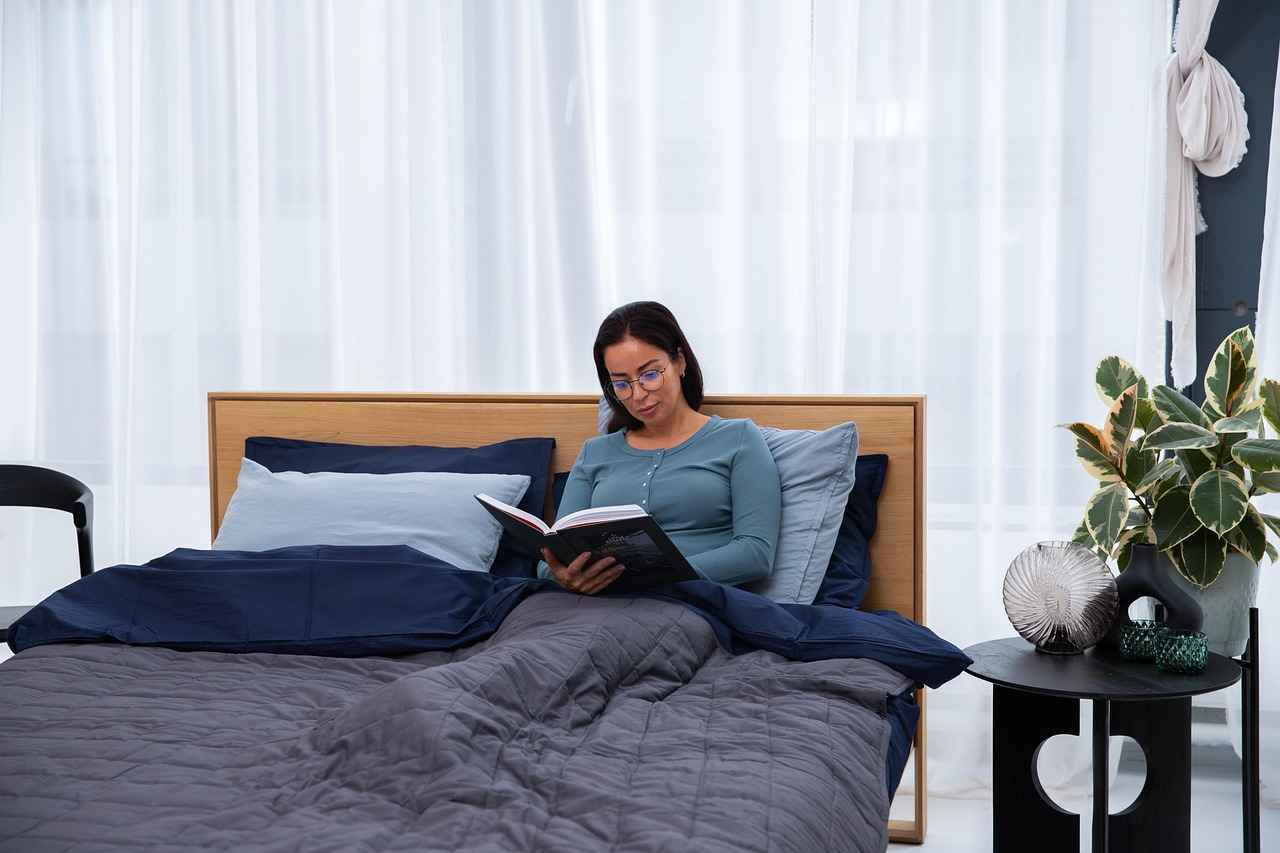
How to Choose the Right Sleepwear for You?
Choosing the right sleepwear is essential for achieving a restful night’s sleep. With numerous options available, it can be overwhelming to find the perfect fit for your needs. In this guide, we will explore various factors to consider when selecting sleepwear, including fabric, fit, and personal style. By evaluating these elements, you can ensure a comfortable and rejuvenating sleep experience.
The fabric of your sleepwear significantly impacts your comfort level during the night. Here are some popular fabric options:
- Cotton: This natural fiber is breathable and soft, making it a favorite for many. It helps regulate body temperature, keeping you cool in summer and warm in winter.
- Bamboo: Known for its moisture-wicking properties, bamboo fabric is incredibly soft and hypoallergenic, perfect for sensitive skin.
- Satin: For those who prefer a luxurious feel, satin sleepwear adds a touch of elegance. However, it may not be as breathable as cotton or bamboo.
- Flannel: Ideal for colder months, flannel provides warmth and comfort, ensuring you stay cozy throughout the night.
The fit of your sleepwear is crucial for comfort. Here are some considerations:
- Loose vs. Fitted: Loose-fitting sleepwear allows for better air circulation and movement, while fitted options may offer a more streamlined look.
- Length: Consider the length of your sleepwear. Long nightgowns may be suitable for cooler nights, while shorts or capris can be great for warmer weather.
- Elasticity: Look for sleepwear with elastic waistbands or adjustable straps to ensure a snug yet comfortable fit.
Your personal style plays a significant role in your sleepwear selection. Here are some tips to align your sleepwear with your aesthetic:
- Color and Patterns: Choose colors and patterns that resonate with your personality. Bright colors may uplift your mood, while neutral tones can create a calming atmosphere.
- Style Versatility: Consider sleepwear that can double as loungewear. This way, you can feel stylish even when relaxing at home.
- Trends: Stay updated with the latest sleepwear trends, such as eco-friendly materials and chic designs, to find options that suit your taste.
Evaluate your specific sleep needs to make an informed decision. For example:
- If you tend to get hot at night, opt for breathable fabrics like cotton or bamboo.
- If you often feel cold, consider flannel or thermal pajamas for added warmth.
- For those with sensitive skin, hypoallergenic fabrics like bamboo can provide a comfortable experience.
Wearing comfortable sleepwear can significantly enhance your sleep quality. Health benefits include:
- Improved sleep quality, leading to better overall health and well-being.
- Reduced stress levels, promoting relaxation before bedtime.
- Enhanced comfort, allowing for uninterrupted sleep cycles.
In conclusion, selecting the right sleepwear involves careful consideration of fabric, fit, personal style, and specific sleep needs. By taking the time to evaluate these factors, you can find the perfect sleepwear that not only looks good but also promotes a restful night’s sleep.
Frequently Asked Questions
- What is the main difference between night dresses and pajamas?
Night dresses are typically loose-fitting and made from soft fabrics, ideal for breathability and comfort. Pajamas, on the other hand, usually consist of a top and bottom set, designed for warmth and coziness.
- Which option is better for hot weather?
Night dresses are generally favored in warm climates because they are lightweight and allow for better air circulation, helping you stay cool during those hot summer nights.
- Are pajamas suitable for colder nights?
Absolutely! Pajamas often provide more coverage and warmth, making them a great choice for chilly nights. Fabrics like flannel and thermal materials are particularly popular for winter.
- How do I choose the best sleepwear for my needs?
Consider factors like fabric, fit, and your personal style. Think about your comfort needs and the climate you live in to find the perfect sleepwear that will help you get a restful night’s sleep.
- What are the health benefits of wearing comfortable sleepwear?
Comfortable sleepwear can significantly enhance your sleep quality, reduce stress, and promote relaxation, contributing to better overall health and well-being.
